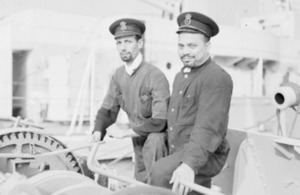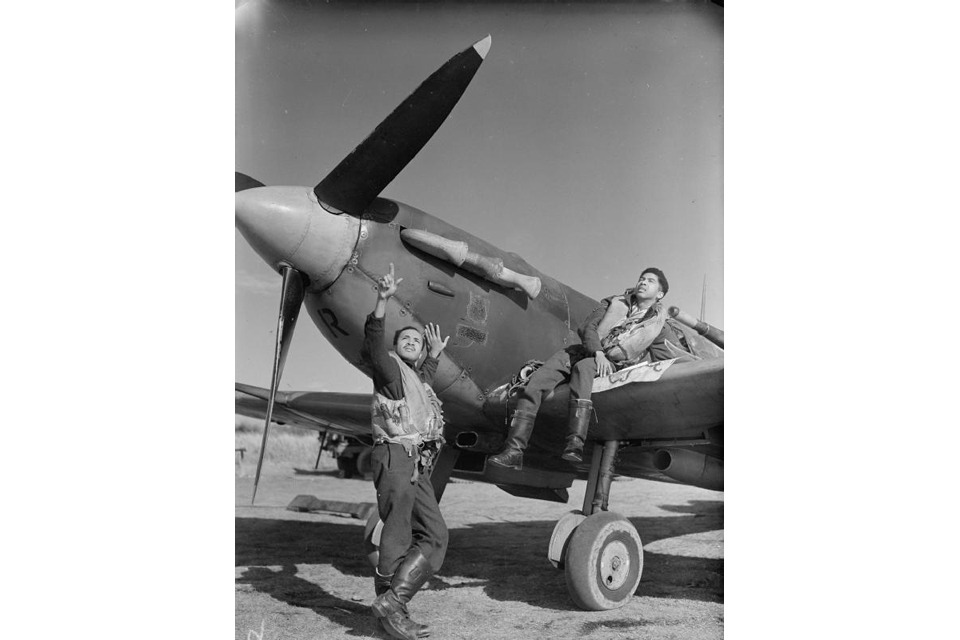We Were There: Black History Month
There is a rich history of racial diversity in the Armed Forces of the British Crown which can be traced back over several centuries.

Two men of the Royal Indian Navy, Abbas Tajuddin and Yusuf Ali, October 1943 (library image) [Picture: courtesy of Imperial War Museum]
To mark Black History Month we will be profiling members of the UK Armed Forces from countries across the world on the ‘We Were There’ Tumblr page.
The largest contingent of military forces outside of the UK came from India. The Indian Army started life in the 17th century when the East India Company recruited local personnel to guard its interests, although formed units were not organised until the mid-18th century. It recruited throughout the sub-continent, mainly in the south and coastal regions where the earliest European interests were located.
Gradually, it expanded its recruitment base to include Gurkhas from Nepal (which was never actually part of the British Empire) from 1815 and later men from the Punjab and other parts of northern India. Not all service was in the home country; between 1860 and 1914, for example, Indian regiments served in China (1860), Abyssinia (1868) and Somaliland (1903).

Left: Regimental Sergeant Major Khamis Jumna of the King's African Rifles, 1940 (c) - National Army Museum (library image). Right: Chief Officer M L Cooper, Deputy Director of the Women's Royal Indian Naval Service, with Second Officer Kalyani Sen at Rosyth during their 2-month study visit to Britain, June 1945 (library image) [Pictures: courtesy of Imperial War Museum]
Recruitment took place throughout the Empire, including China, East and West Africa, and the West Indies. Most recruits enlisted into local defence forces, although a few, such as the West India Regiment, existed for overseas service.
The Royal Navy has long been an ethnically diverse force. Throughout the 18th and 19th centuries, as Britain’s empire grew to cover a quarter of the globe, the Navy employed men from all over the world.
Until 1853, recruitment was the responsibility of the captains of individual ships. The Navy relied heavily on the Merchant Navy, which employed mixed race crews, for its manpower. At the Battle of Trafalgar, HMS Victory carried 71 men of foreign nationality.

West Indian members of the Bombay Squadron who took part in Fighter Command sorties over enemy-occupied territory: A O Weekes of Barbados (left) and Flight Sergeant C A Joseph of Trinidad (library image) [Picture: courtesy of Imperial War Museum]

Albert Marshall was a fireman from Ceylon. He served with the Royal Navy in the First World War and with the Merchant Navy from the beginning of the Second World War (library image) [Picture: courtesy of Imperial War Museum]